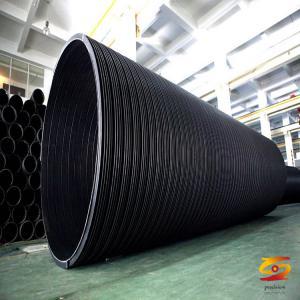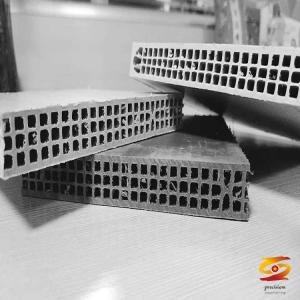Common Problems and Solutions in the Granulation of Five Modified Plastic Particles
Common Problems and Solutions in the Granulation of Five Modified Plastic Particles1. Break
1. The raw materials have miscellaneous materials. Check whether the materials in the material opening contain miscellaneous materials.
2. Poor plasticization, the processing temperature needs to be increased. (For glass fiber reinforced composite materials, it is often caused by excessive temperature.)
3. The vacuum is not strong enough, check whether the vacuum is running well, and whether the seal meets the requirements; whether the seal meets the requirements
4. The filter is clogged and the filter is replaced.
5. The number of die holes is incorrect, and the material flow is unbalanced.
6. Without the addition of perforated plates (except for glass fiber products), the melt is disturbed to cause broken bars. The broken bars are mainly concentrated on the left side.
7. The extrusion pressure is too low, the material in the screw is not full, it is necessary to increase the feeding frequency and increase the number of filter meshes.
2. Bursting material: divided into non-plasticized materials and plasticized materials
No plasticized material
1. Appropriately reduce the feeding amount or reduce the screw speed.
2. Raise the temperature of the front section to speed up the plasticization of the material in the barrel; for example, the conventional adjustment before and after the fiberglass opening of the reinforcing material: the temperature of the transportation and melting zone is appropriately increased by 5-10 ℃, and the quilting port is behind the heating zone The temperature is appropriately lowered by 10-20°C.
3. Adjust the screw combination in front to make the front and rear conveying balance and accelerate the plasticization of the material in the barrel.
3. Plasticized materials
1. Too much feeding; reduce the feeding frequency.
2. Vacuum cover opening.
3. Blocking phenomena such as carbonization and filling of the machine head stencil; clean the machine head.
4. The screw arrangement is wrong (for example, the position of the reverse thread block is not too close to the position of the exhaust port, and generally requires a distance of one thread).
4. Appearance
1. There is a hole problem at both ends of the particle.
There are holes at both ends: it indicates that the material contains more low-molecular substances and the water content is more, and the vacuum exhaust is not cleaned or the raw material contains more low-molecular water-repellent components. Only one end has a hole: it means that the low-molecular substance contained in the material has less water content and can be accepted when there is no strict requirement.
Solution: pre-treatment (drying, sealing, etc.); strengthen vacuum exhaust (at the same time to consider the screw design); increase the tank temperature.
2. Particle foaming
Excessively high, decomposition of raw material components, etc.
The moisture content of the raw materials is too high; the raw materials (poor sub-brand materials) are not resistant to temperature or the ingredients are used improperly, and they are chemically reacted with each other;
There are multiple holes, or the surface roughness and vacuum are not enough; temperature.
3. The problem of smooth and flat particle surface.
The surface of the particles is smooth and smooth, depending on the composition of the raw materials used-glass fiber, inorganic minerals, flame retardants with a rough surface and other substances. But compared with the bottom, the same batch is different, the reasons are:
1) Uneven-large quantity? short time? machine?
Insufficient processing temperature and poor plasticization;
The screw combination is unreasonable or the speed is low, the shear is not enough, and the material is not melted well;
Too much lubricant or special processing characteristics (such as slip, low melting point), slippage and shearing of the surface of the material are invalid;
2) Machine problems, such as uneven die holes, not smooth enough, etc.;
3) The compatibility between the raw material components is not good (including the color pink masterbatch), and delamination and precipitation occur.
4. Particle size
The length is basically the same (long grain and short grain)
The strip crosses into the pelletizer; the strip crosses into the pelletizer; the pressure roller is too loose (cutter air pressure);
The sharpness of the cutter, adjust the cutter distance, the clearance between the scraper and the spline shaft.
5. Strip
The length is more than 2 times the standard particle size. Moisture adjustment (especially 5000 system, excessive moisture strip has a slippery feel). The pressure roller is too loose (the air pressure of the pelletizer); the sharpness of the cutter, adjust the cutter blade spacing, scraper and flower Key shaft clearance. The moving knife or rubber roller has been severely worn and needs to be replaced.
6. Powder
Grab a handful of material with a clean hand and let go to see that the powder remaining on the palm is less than water. Adjust the sharpness of the cutting temperature, the sharpness of the moving knife, the gap between the fixed knife and the hob (between 0.07-0.15MM), and enhance the product. Vacuum or bad vacuum.
7. Too little sticking and scorching too much water The pelletizer draws too fast
No hair dryer, or the wind power of the hair dryer is too weak.
8. The temperature of the continuous grain and sticky grain cutting strips is too high
Adjust the length of the water, or adjust the speed of the pelletizer. The strips will cross-block when the water passes, or the strips will cross into the pellets.
9. Tail cutter is not sharp
The particles themselves have cracks
10. Rust
There is a reddish-brown substance on the surface of the particles, which is mainly due to the excessive moisture of the strip. The air drying is not enough to cause the cutters in the pelletizer to rust. Reduce over-water, increase the number of air knives (or increase the blowing force).
Five, black spots
1. There are black spots on the particle surface that cannot be erased
The cleaning machine is not clean; materials left in the vacuum port, fiberglass port, on the die head, on the filter plate, retained, high-temperature carbonization; too high temperature leads to carbonization of the material in the screw and screw barrel; flame retardant pyrolysis and carbonization; Poor toner dispersion
The raw material level is not enough, there are many black spots;
2. Discoloration/black and yellow lines/greasy particles:
Vapors fall into the vacuum port; carbonization of the retentate in the die head, machine head, and filter plate; decomposition and carbonization of the flame retardant; too long shutdown time, material decomposition; oil stain adhesion in the area where the strip passes;
3. Are there black spots on the surface of the particles that can be erased to clean the barrel, receiving hopper, vibrating screen and other uncleaned environments? The introduction of black spots is caused by the carbonization of the material in the barrel. This barrel is at the fiber port and vacuum port. Where there are carbonized materials, glass fiber ports and vacuum ports need to be cleaned, and there are carbonized materials where the dies and stencils need to be removed for cleaning.
3. Black spots caused by unstable pressure
A. When there are several materials with different MI in the formula, the screw design should be based on the material with the lowest viscosity and relatively strongest shear
B. Periodically clean the screen, exhaust port, vacuum port, and screw pull
C. Select the screw with low friction coefficient coating
D. Introduce the melt pump
If you want to know more about it please do not hesitate to
contact me. WhatsApp:+86-15966835076.









